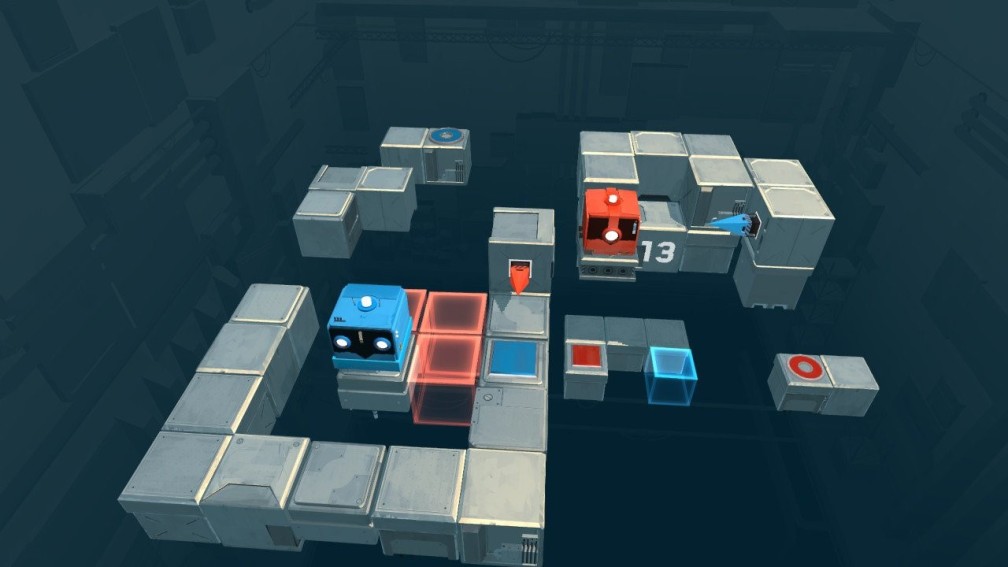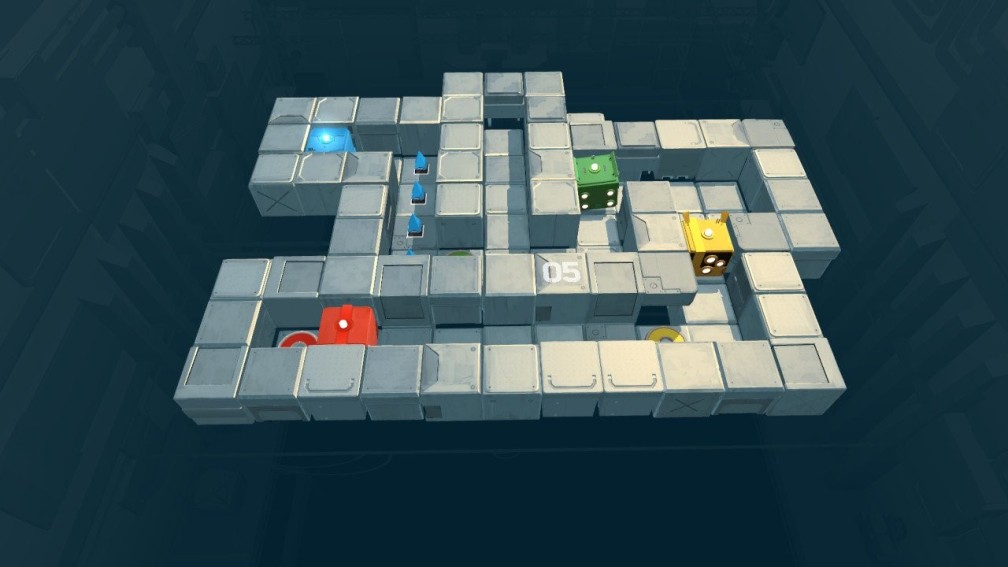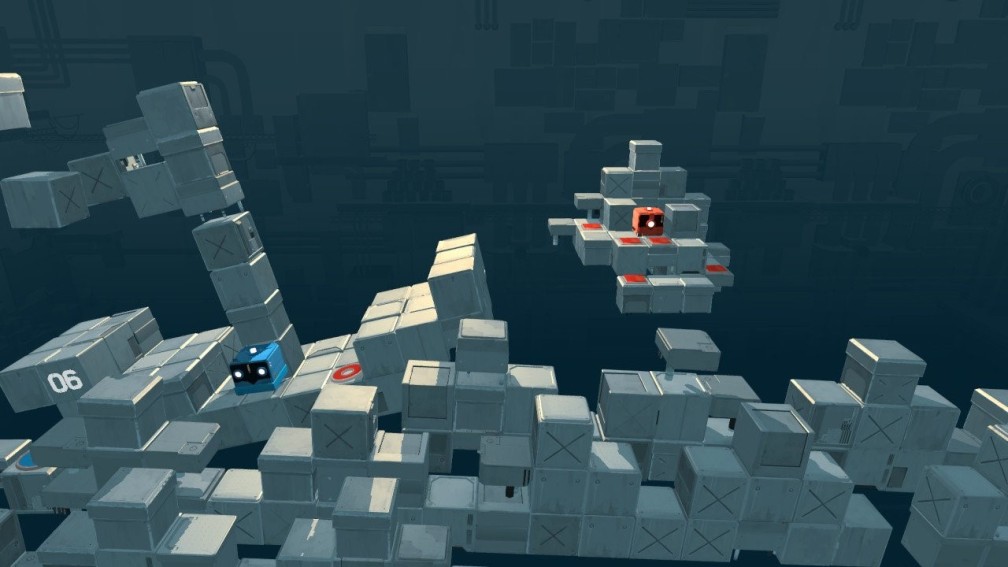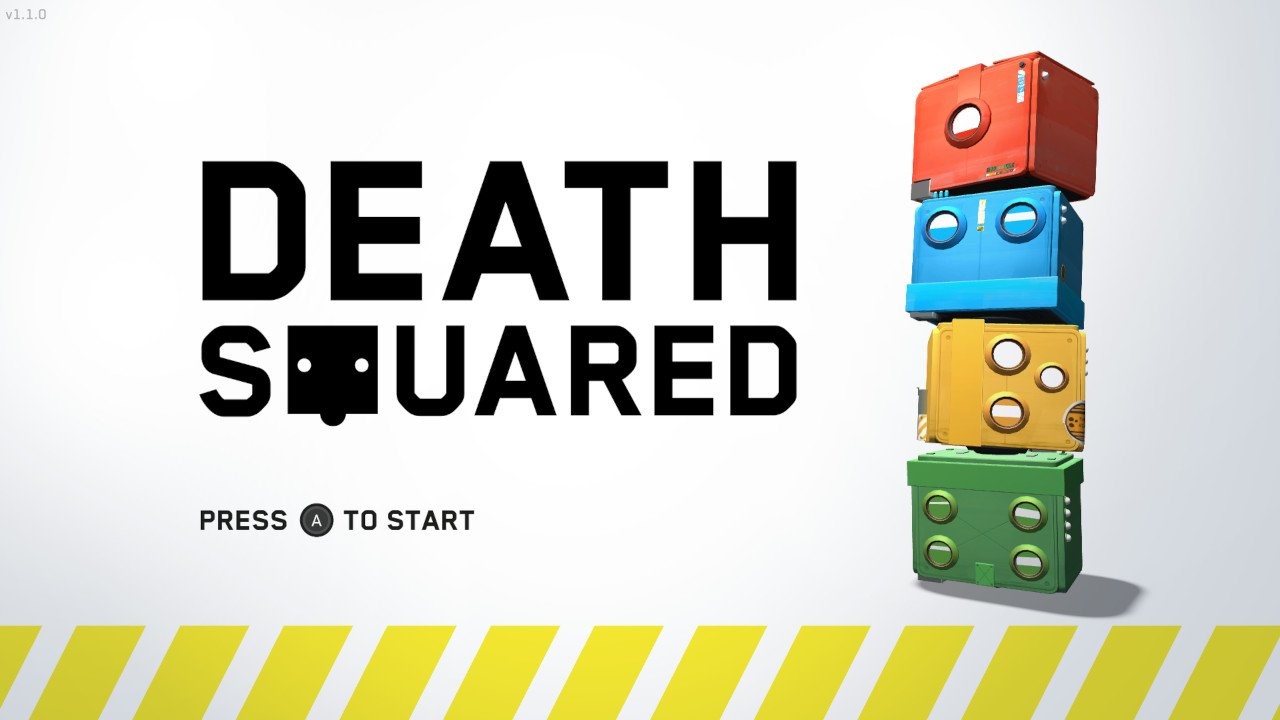Death Squared
Death Shared
I am fortunate to have a dedicated Player 2 in my life. Money can buy you a video game system, controllers, and games. It can also buy you a Player 2, but that’s expensive and frowned upon. For those of you who don’t have a gaming partner and aren’t interested in the underground gaming slave market, your gaming life is somewhat stunted. Some games (like the Jackbox Party Packs) are almost entirely worthless to you. Other games (like Overcooked! and Snipperclips) are co-op experiences but have options play alone. You can enjoy them by yourself in the same way you can enjoy a dinner for two by yourself: full of shame and feeling like this isn’t how it’s supposed to be.
 Death Squared targets co-op gamers but is perfectly functional as a single-player affair. Because most puzzles involve taking turns to move, controlling both characters yourself doesn’t feel overwhelming or unintuitive. Although levels are inventive and can challenge you to think abstractly to find solutions, few puzzles are so difficult that you need a second player to offer ideas. Essentially, a single player can enjoy Death Squared’s gameplay, but the game’s humor and unpredictable deaths are best enjoyed with others.
Death Squared targets co-op gamers but is perfectly functional as a single-player affair. Because most puzzles involve taking turns to move, controlling both characters yourself doesn’t feel overwhelming or unintuitive. Although levels are inventive and can challenge you to think abstractly to find solutions, few puzzles are so difficult that you need a second player to offer ideas. Essentially, a single player can enjoy Death Squared’s gameplay, but the game’s humor and unpredictable deaths are best enjoyed with others.
What is it?
Death Squared’s Story Mode focuses on the trials of two robotic cubes. They are subjected to test after test (80 in all) in which they find themselves on suspended platforms hanging above bottomless abysses. These stages are usually small enough to fit onscreen without the camera moving, but they are littered with traps to obliterate the blocky heroes. A test is passed once each box simultaneously places itself on a panel of its color.
Opposite colors will often be your robots’ downfall. While a red laser won’t hurt the red cube, it most certainly will explode the blue one. A wall of red, transparent cubes can be impassable to blue but pose no obstacle to red. Conversely, a red pathway is a safe bridge for blue but no different from dead space to red. Most stages are dynamic, with each pressed button and each pushed block altering the structure of the level. Sometimes these changes open a new path for you; other times, they trigger spikes to impale a character or catapult another bot off the level entirely. Death is natural and expected as trial-and-error plays a part in finding the solution to a level.

As you progress through levels, David (a lowly AI tester) and Iris (his A.I. partner/supervisor) provide commentary, criticizing or commending your progress or delving into humorous stories about computer updates/David’s mother. At times, David will even mess with the testing’s programming, thus altering how you play or what you may encounter. Unfortunately, these two are not present in Death Squared’s 40 four-player stages (Party Mode) or 30 extra hard Vault levels. These “bonus” levels follow the same format as the main game, but their testers presumably are mute compared to Iris and David.
What’s good?
- The humor is superb. David and Iris (both played by the fantastic Rice Pirate) offer some lovely banter. David is—in a word—a douchebag but a lovable, pathetic one whereas Iris is your sarcastic, GLaDOS knock-off who provides a good foil to David. Their commentary primarily accompanies your progress through levels, but you will get the occasional, repeated quips based on your deaths, movements, and successes. Your deaths add to the humor as well because your demises are frequently unexpected, creative, or caused by a dickhead friend.
- The puzzles offer a balanced level of difficulty. Apart from a handful of levels, you will typically figure out a solution after a few minutes of dying or staring at the level. The Vault levels pose the greatest challenge, but if a dunce like me can solve them, so can you. You will die plenty of times, and the game will flaunt your failings by keeping track of them with a counter, but it’s okay to die. It’s part of life and helps you solve problems.
Note: Solomon does not endorse dying in real life to solve problems.

- Death Squared offers a lot of content without overstaying its welcome, which is quite amazing given the simplicity of the game. The control stick is all you need to move your characters and solve all levels, and there are few gimmicks introduced throughout the course of the game. Still, the developers managed to make most stages feel unique even given these few tools.
What’s bad?
- Without David and Iris, the Party and Vault levels are a little less enjoyable. Their commentary serves as an incentive for completing levels, so the “one more level” mentality found in the main mode isn’t quite as strong for Vault or Party. As I have stated, the levels, themselves, can still be rewarding, but the voice-acting is what propels this game from good to great, and without it, you’re playing “good,” not “great.”
- Party Mode does not quite live up to the two-player levels. For a solo player, Party Mode is a little overwhelming as you switch between all four robots. With a team of four players, gaming can be raucous fun, but gameplay does feel slowed down. With four players, stages are routinely filled with more obstacles and player interactions, necessitating a more methodical pace to ensure everyone lives and hits each step of the puzzle correctly. Some play groups may enjoy scratching each other’s heads to figure out the solution, but for others, the process may be too laborious to justify the payoff.
- There is only one stage theme. The graphics are simple and clean, but no matter what level you’re on, you’ll have the same dark blue backdrop with the same gray blocks suspended over the same black nothingness. At times, depth is a little hard to gauge as well.

What’s the verdict?
For those looking for a competent puzzle game, Death Squared provides, be it for one player or four. The game introduces a simple set of rules and creates devious problems based on these basic rules, a characteristic most good puzzle games have. However, Death Squared’s humor boosts the overall game’s quality, separating it from all the other good but forgettable puzzle affairs. Solitary gamers can certainly enjoy the experience, but the hilarity is truly something you should share with someone else. Find another human being, get to know them, love them even, and then revel when you vindictively kill them for messing up in-game. This is the joy only found in comradery.
Arbitrary Statistics:
- Score: 8
- Time Played: Over 5 hours
- Number of Players: 1-4
- Games Like It on Switch: Snipperclips, The Bridge

